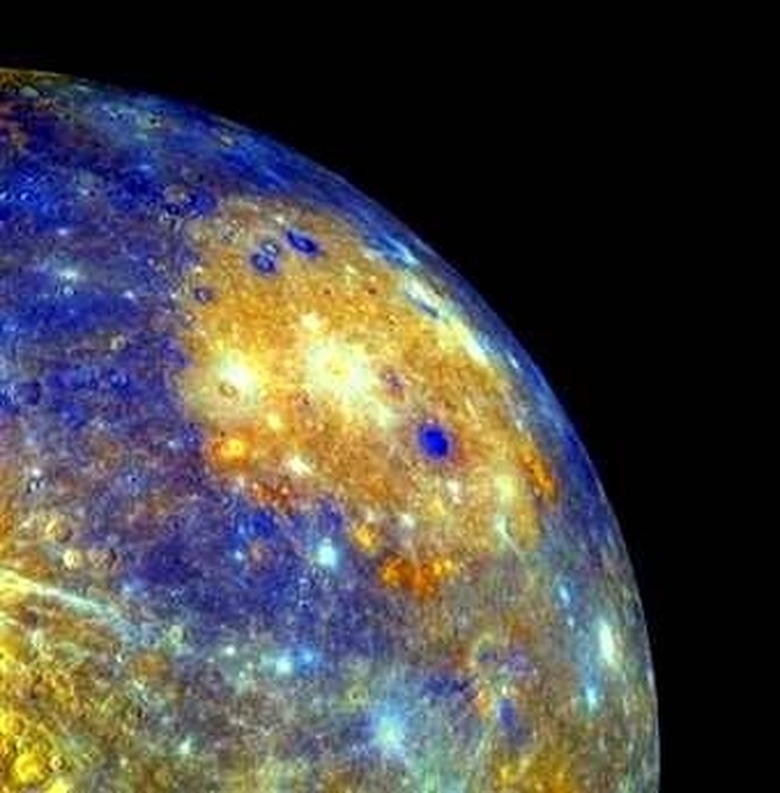How To Make A Model Of The Planet Mercury
When the scientific community announced Pluto was officially demoted from planet to star, Mercury officially became the smallest planet in the solar system. That said, there's no reason to treat this celestial jewel like the runt of the litter. If you have the opportunity to choose a planet for your model-making project, this one can do you proud. Size does matter, so make yours big, then hang it from your ceiling as a reminder that even the smallest planet in the solar system can have a big impact on your décor.
Step 1
Blow up a round balloon and tie it off. The size of the balloon won't matter because you're not making an entire solar system so scale isn't important. Make your Mercury model as large as the balloon will expand, but be careful not to break it.
Step 2
Use your hands to rip sections of newspaper into thin strips. Use several sections of the Sunday newspaper. It's better to make more strips than you need. You can always recycle the unused newspaper.
Step 3
Pour prepared papier-mâché paste into a large bowl or pot, or mix your own formula by combining flour and water until it's a thick paste. The secret to mixing your own paste is to put the flour into the bowl first, then gradually add water to produce a mix that resembles oatmeal. But if you always use cold water, your paste won't have as many lumps.
Step 4
Dip a few strips at a time into the papier-mâché glue to control the speed at which you soak the paper. Wrap them around your balloon in a uniform fashion until you can't see any of the latex. It's OK to make the surface you're creating less than smooth because planets have crevices and bumps on their surface. Space out the coated strips evenly as you build to no more than four layers.
Step 5
Use sandpaper to even out problem areas you might find after it has dried. Screw the cup hook into the top of the model. This will create a hanging source. If you want to be certain the cup hook stays in place, add a little glue to the screw before inserting it.
Step 6
Replicate the colors found in the photo by applying blue, gold and brown paints. If you're an adventurous sort, use a sponge to apply the colors. If these hues aren't your favorites, pick other colors that match your room.
Step 7
Allow the paint to dry, then give your model planet a dazzling finish by spraying the surface with glue and rolling it in glitter or use spray glitter to illuminate the piece. Thread fishing line through the hook and hang your model from the ceiling.
Things Needed
- Round latex balloons
- Lots of newspaper
- Commercial papier-mâché paste or flour and cold water
- Ultra-fine sandpaper
- Latex-based crafting paints
- Glitter and spray glue or spray glitter
- Cup hook
- Bowl or pot for mixing paste
- Monofilament (fishing line)
TL;DR (Too Long; Didn't Read)
The pace at which you layer on papier-mâché strips can mean the difference between a solid model and a soggy one that takes longer to dry. Give each layer dry time before adding the next so you don't pile too much wet material onto the model at once.
Cite This Article
MLA
Cohen, Gail. "How To Make A Model Of The Planet Mercury" sciencing.com, https://www.sciencing.com/make-model-planet-mercury-5031542/. 24 April 2017.
APA
Cohen, Gail. (2017, April 24). How To Make A Model Of The Planet Mercury. sciencing.com. Retrieved from https://www.sciencing.com/make-model-planet-mercury-5031542/
Chicago
Cohen, Gail. How To Make A Model Of The Planet Mercury last modified March 24, 2022. https://www.sciencing.com/make-model-planet-mercury-5031542/
